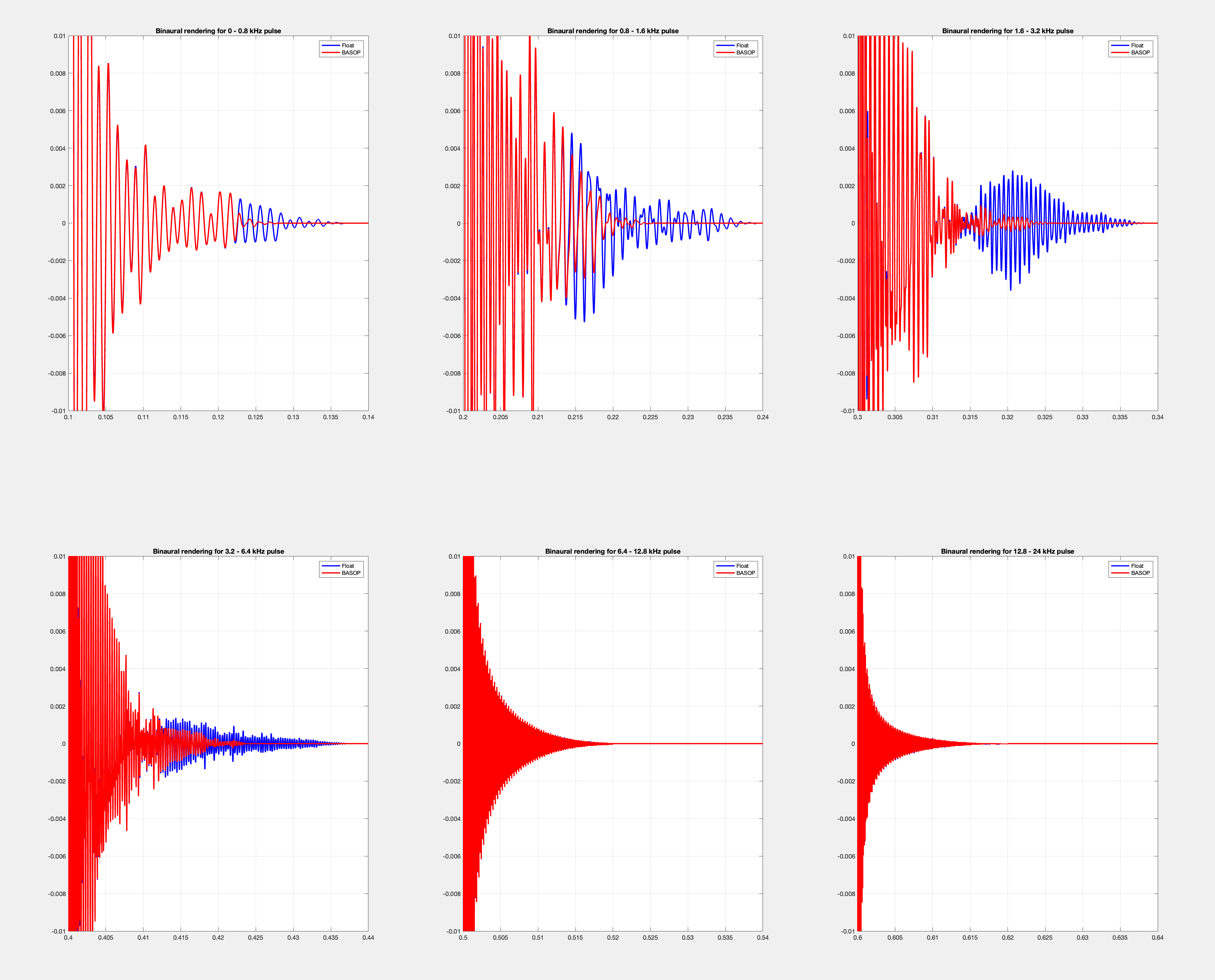Difference in the decorrelator tail in the IVAS_rend MASA binaural output
Basic info
- Float reference:
- Renderer (float): 91d6421f199971e671deef190d335e6062fb0fd8 (IVAS-PC float repo)
- Fixed point:
- Renderer (fixed): a1222292
Bug description
The decorrelator "tail" seems to fade out faster in the BASOP renderer than in the float renderer. This was noticed by rendering band-pass filtered impulses with a 1TC MASA file that has direct_to_total_energy_ratio = 0 for all time-frequency tiles, which causes the output audio to be fully decorrelated (at the frequencies where the decorrelation is performed).
The MASA binaural renderer uses this decorrelator:
void ivas_dirac_dec_decorr_process()
and the maximum bin for the decorrelation is 15, i.e., the decorrelation is performed below 6 kHz.
The difference can be seen in the following time domain plots, where the band-pass filtered pulses were rendered with the float and the BASOP renderers. It can be seen that for the pulses below 6 kHz the decorrelator outputs fade out faster with the BASOP renderer than with the float renderer. For the pulses above 6 kHz, there is no difference in the output, as the decorrelation is not applied at these frequencies.
Ways to reproduce
Box folder: ...\Box_EXTERNAL_IVAS_BASOP_VERIFICATION\issues\issue-2049
Use the below command with the provided sample
./IVAS_rend -if MASA1 -i issue_test_sig.pcm -im issue_test_sig.met -fs 48 -of BINAURAL -o rend_binaural.wav
